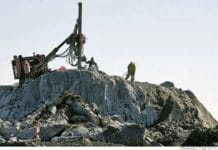
by Ahimsa Porter Sumchai, MD
“The modern Environmental Justice Movement would not be what it is today if it were not for the African Americans who helped shape it. African Americans have been fighting for decades. From sparking the modern Environmental Justice Movement to conducting key research on environmental pollution to founding countless grassroots organizations, their legacy is undeniable.” – Eddie Junsay, “The Environmental Justice Movement is Rooted in Black History,” https://350.org/black-history-month/
Civil rights attorney Abre’ Conner and the Moms Clean Air Force explain why environmental protections are important to Black History Month in the Huffington Post: “If Black history is indeed American history, the importance of the Environmental Protection Agency as it relates to Black people should resonate to all people.”
The first major study of segregation and pollution in America was conducted in 1987 by the Commission for Racial Justice. “Toxic Wastes and Race in the United States” showed race is the major variable in where toxic waste facilities are sited. People of color comprise 57 percent of residents living within a two-mile radius of hazardous waste sites and 60 percent of residents living near polluting industries.
The national mapping conducted by the Commission for Racial Justice on file with the National Research Council identifies southeast San Francisco as one of the worst regions in the nation.
In 1992, civil rights icon Congressman John Lewis introduced the Environmental Justice Act in environmental decision making – the federal mandate that environmental laws and policies should not discriminate on the basis of race, color, national origin or income.
President Barack Obama codified the White House commitment to fighting environmental racism in 2011, building on Bill Clinton’s executive order on environmental justice that mandated federal agencies direct attention and investigation into federal actions that discriminate against people of color and low-income communities.
The father of environmental justice
The Environmental Justice Movement emerged “like a phoenix” from the embers of a quiescent civil rights movement in 1978, when attorney Linda Bullard recruited her husband Dr. Robert Bullard as an expert witness in the trailblazing civil rights case Bean v. Southwestern Waste Management. The injunction charged racial discrimination by the city of Houston’s decision to site a garbage dump in an affluent African American suburb.

Dr. Robert Bullard produced maps and statistical evidence proving race was the decisive factor in the proposed siting of the toxic waste facility. Bullard’s 1987 book “Invisible Houston” revealed the city’s municipal authorities disproportionately sited environmental hazards, such as garbage dumps and incinerators, in neighborhoods where people of color lived.
Bullard went on to author books advocating environmental justice, including “The Quest for Environmental Justice: Human Rights and the Politics of Pollution.” Director of the Environmental Justice Center at Clark Atlanta University, Bullard is considered the foremost authority on environmental justice in the United States.
In a 2018 Guardian interview, Bullard defined environmental justice as “the right to live, work and play in a clean environment” and identified the roots of environmental injustice as racial discrimination in housing, land use planning and zoning.
“Lines of demarcation on race and class are used to confine and segregate individuals and communities. This historical pattern stands to this day.” Read the full interview: https://www.theguardian.com/commentisfree/2018/dec/20/robert-bullard-interview-environmental-justice-civil-rights-movement#:~:text=Robert%20Bullard%20is%20known,environmental%20racism%20in%20the%201980s.

As a direct result of Dr. Bullard’s pioneering research and life’s work, the Environmental Protection Agency advanced environmental justice across the federal government in rulemaking to eliminate the disproportionate impact of industrial activities on environmental justice communities.
The national mapping conducted by the Commission for Racial Justice on file with the National Research Council identifies southeast San Francisco as one of the worst regions in the nation.
On Jan. 27, 2021, President Joe Biden signed an executive order to establish a White House Interagency Council on Environmental Justice, forming an Office of Health and Climate Equity at DHHS and an Office of Environmental Justice within the Department of Justice.
The face of environmental justice at the EPA
Biden grew up in a fenceline community adjacent to a Delaware oil refinery and in the historic Oct. 22, 2020, presidential debate recalled, “That’s why so many people were dying and getting cancer. The fact is in those fenceline communities, it’s not a matter of what you’re paying them. It matters how you keep them safe. What do you do? You impose restrictions on the pollutants coming out of those fenceline communities.”

The Washington Post announced the historic picks Biden made to “put environmental justice front and center,” including Rep. Deb Haaland, D-N.M., the first Native American to serve as a cabinet secretary and head of the Interior Department; North Carolina environmental regulator Michael S. Regan, the first Black man to head the Environmental Protection Agency; Brenda Mallory, the first Black chair of the White House Council on Environmental Quality.
The Duke Energy Corp. coal-fired power plants located at the fenceline of Goldsboro, N.C., were shuttered in 2012. EPA chief nominee Michael Regan is credited with working across the aisle to secure a multibillion-dollar settlement to clean up coal waste.

“It’s six miles as the crow flies from the childhood home of Michael Regan to the shuttered coal plant that helped light up the city of 35,000 people. During the 1980s, the plant’s three coal-fired generators were industrial monoliths on the edge of Goldsboro, N.C.
“During that time, Michael Regan, the first Black man nominated to lead the EPA, had his first asthma attack. Regan recalled memories of airway constriction, shallow breathing and the reflexive gasp from a bronchial inhaler growing up in eastern North Carolina. ‘I developed a deep love for the outdoors and our natural resources, but I experienced respiratory issues that required me to use an inhaler on days when pollutants and allergens were especially bad.’” – Climatewire, Dec. 21, 2020

On Tuesday, Feb. 9, 2021, the Senate Environment and Public Works Committee approved the nomination of Regan as EPA administrator in a 14-6 bipartisan vote. Chairman Tom Carper, D-Del., called Regan “the right person to lead the EPA at this time.”
The full Senate must now vote to confirm him. As part of the confirmation process, Regan responded masterfully to 271 questions and received a standing ovation and a big hug from his proud and equally handsome son, Matthew.

If confirmed, the 44-year-old, who currently heads the North Carolina Department of Environmental Quality, would be responsible for setting fuel efficiency standards for American automobiles, reducing emissions from power plants and cleaning up the country’s most polluted sites. Regan is credited with working “across the aisle” with community activists, corporations and Republican legislators.
In a high-profile case, Regan forged a multibillion-dollar settlement over cleanups of coal waste with Duke Energy and established an environmental justice advisory board.
SF Bay View Health and Environmental Science Editor Ahimsa Porter Sumchai, MD, PD, founder and principal investigator for the Hunters Point Community Biomonitoring Program, founding chair of the Hunters Point Naval Shipyard Restoration Advisory Board’s Radiological Subcommittee and contributor to the 2005 Draft Historical Radiological Assessment, can be reached at asumchai@gmail.com. Dr. Sumchai is medical director of Golden State MD Health & Wellness, a UCSF and Stanford trained author and researcher, and a member of the UCSF Medical Alumni Association Board of Directors.

 Store
Store






